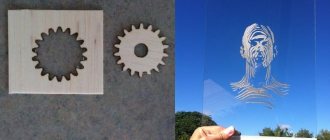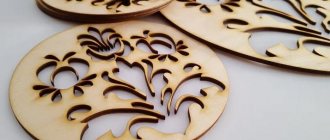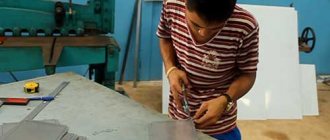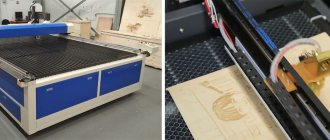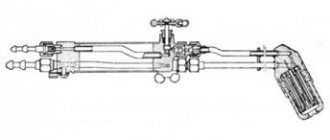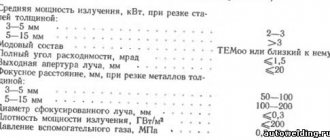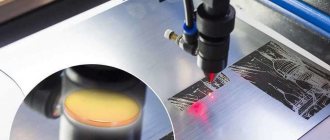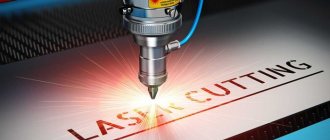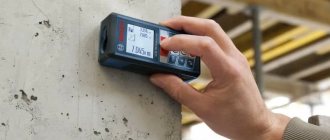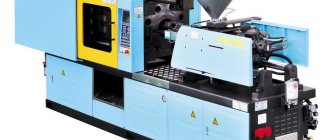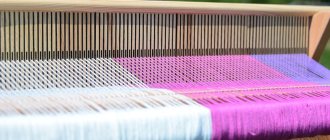Laser CNC machines are used to produce furniture, promotional items and souvenirs from wood or plastic. The engraver's range of actions includes cutting, burning, and engraving. The workflow is quick and easy. Laser can be used to apply pictures, emblems and logos to wooden and plastic surfaces.
An engraving machine can be purchased at a store or assembled with your own hands. Making a laser for cutting plywood yourself is not that difficult. A homemade device will have lower power and, nevertheless, you can create full-fledged engravings on it.
Laser machine control board: M2 Nano, RuiDa
So, well, let's start then! Let's start with the front panel!
This model has a RuiDa control system, not an M2. RuiDa is a cooler board. The main advantages of the RuiDa board:
- Ability to change laser power without human assistance. Thanks to this, you can engrave photographs. On the M2 you can only do single color engraving in one pass.
- Continuation of operation from the moment of emergency stop. For example, if the electricity goes out, after turning it back on, the machine will continue to work as if nothing had happened.
- Ability to work without a computer, reading a file from a flash drive.
- Possibility of connecting the machine to a local network.
- Availability of a Russian interface (for many users this is important).
- Possibility of embedding LaserWork into graphic editors CorelDraw, Adobe Illustrator, Autocad, Inscape.
- Backlash compensation.
- Self-diagnosis.
- Supports multi-positioning (you can set several reference points to start working).
- Ability to view layers
- Calculation of the exact processing time of the material
You can change the board from M2 to RuiDa at any time, you will have to tinker for a day, though.
The top photo shows just the front panel, but the brains of the machine look different. Here they are:
M2 Nano control board
To make it clear: this board consists of:
- USB UART converter - transmits and converts commands received from the computer to the microcontroller
- Microcontroller - converts commands directly into the movement of the laser head itself and turning the laser on/off. He does this with the help of stepper drivers.
- Two stepper motor drivers - control the current of stepper motors.
- Harness
RuiDa control board
RuiDa's structure is much more complex. Here it is disassembled.
There is already a fast 32-bit TMS320 microcontroller, Altera FPGA and memory modules. This is what I saw right away; I didn’t look for the rest on the Internet. The point is clear. The capabilities of this board are much higher - it is an independent computer. However, RuiDa does not have stepper motor drivers on board - they will have to be purchased separately.
Stepper motor drivers for laser machines
Don’t rush to buy the most expensive drivers right away. Drivers have three main parameters: current, the minimum period length for the STEP clock signal, and the maximum microstep. If you have questions, it’s better to ask ON THE FORUM
We even made a special expansion board for the small laser machines of the HOBBY and OPTIMA series.
Using this board, we can install more powerful drivers instead of standard drivers, or vice versa, drivers that will make the engines operate absolutely silently. This idea came to my mind after I was assembling another machine and I needed drivers, but everything was out of stock. I bought expensive stepper motors in a St. Petersburg store and installed them on the machine - everything seemed to work, I drove it at high speeds and that was it - skipping steps right away. I thought for a long time what the problem was until I figured out how to figure it out. It turns out that instead of a branded mikruhi, there was some kind of Chinese remake. We had to remove the drivers from our office machine so that the person would not delay the delivery, however, now the person has super powerful 5 Ampere drivers, although in reality they need 0.5 Ampere and 1 Ampere. We sign all the machines, because people get the hang of it much faster this way. The drivers on this machine are installed on the right.
Well, in the meantime I made the following temporary solution for our standard machine:
I took the drivers from our 3D printers and configured Ruida for them, soldered everything together, and until the arrival of new drivers, everything will remain in this state. The main thing is that everything works at high speeds. Engraving at a speed of 500 mm/s without problems.
In general, the task of stepper motor drivers is to provide the correct current to the windings and not slow down when receiving control signals from the microcontroller, so that the motors quickly and accurately ensure the movement of the laser nozzle over the working field.
Instead of an epilogue
The analysis of the market showed that the leaders in it are not Western companies. Russian buyers prefer to purchase Asian-made analogues, since the components used for their assembly are still produced in Europe. And this already allows us to talk about overall quality. At the same time, most Chinese companies do not have their own service centers in the Russian Federation, which means there may be some problems with repairs. However, from the beginning of 2022, this situation began to improve - authorized centers appeared in Siberia and the Far East, which provide the services of visiting specialists in the regions of Russia (even within the framework of warranty service).
Laser tube ignition unit
You can return to the previous drawing - this block is signed. Quite a massive black box. Another important element of a laser machine. In order for the tube to work, this unit raises the voltage at its terminals to a voltage of more than 20 kV and raises it until a discharge begins in the tube. If the tube fails and the discharge never begins, the high-voltage unit will either turn off or continue to produce the highest possible voltage, which can damage it.
Let's assume that the tube is working properly and the discharge has begun - now the high-voltage unit turns on the current stabilizer to maintain the required current, regardless of the load in the circuit. The voltage usually decreases.
conclusions
A CNC laser machine allows you to set up large-scale production with relatively small investments. Installation of the machine does not require much space, and prices for machines start at approximately 100,000 rubles. The entire process, from developing a sketch or digital model to receiving the finished product, can be completed by one worker. Thanks to the high precision of the machine, the result is predictably excellent.
To get a consultation
Find out more about the possibilities to improve your production by integrating new equipment:
Laser tube
Oh, this is the most interesting place. For many, something strange and incomprehensible begins here. Let's start simple: what is a laser tube?
Let's start with the simplest definition. The laser tube is a glass bulb that has 3 internal cavities. Water or other coolant flows through the middle of the cavities. But in the other two cavities there is a mixture of gases. What kind of mixture of gases is this?
It consists of:
- CO2 (carbon dioxide) is a gas that releases energy in the form of photons. Together they produce laser radiation.
- N2 (Nitrogen) is a good resonator. It converts most of the absorbed energy into vibrations, causing CO2 particles to collide with each other.
- He (Helium) - it increases the rate of photon emission. But Helium also has high thermal conductivity, which helps keep CO2 at a low temperature. And the low temperature of CO2 allows you to create a high population of low energy levels. This allows CO2 to emit more new photons. Well, the low temperature of CO2 slows down the rate of its degradation. But Helium atoms are very small and they even leak through the glass from which the laser tube is made. Therefore, an old tube (more than 2 years old), which has never even been used, will have a low radiation power, and will also very quickly become unusable due to CO2 degradation.
A photon is emitted in the following cases:
- A charged CO2 particle collides with a photon or neutral atom.
- Collision of N2 atoms with CO2 atoms
- Exposure to external electromagnetic field
In order to create positive feedback, the tube has an optical resonator.
Laser tube structure
The resonator consists of a glass bulb (marked in red) and two mirrors. One has a reflectance of 100% (in practice 98%), the other has 50%.
Interference of waves occurs in an optical resonator. The wave traveling near the resonator axis is amplified and reflected from the mirrors. Moreover, with each such reflection, the wave only partially passes through the mirror with a reflection coefficient of 50%. Actually, the first 50% is supplied directly for cutting the material, and the second half is reflected and remains in the resonator.
The higher the temperature of the laser tube, the paler the violet discharge becomes.
Laser machine mirror system
I hope you now have a better understanding of how the laser tube works. Let's return to the half of the radiation that is released by a mirror with 50% reflection. This radiation will cut the material. But first you need to direct it correctly. The quality of the cut greatly depends on the correct setting of the mirrors.
As soon as the radiation leaves the tube, it hits the surface of the mirror for the X axis. This mirror is motionless, the adjustment must begin with it. The main task is to make sure that the beam reflected from this mirror hits the same point on the mirror along the Y axis. It doesn’t have to hit the center, the main thing is that it hits the same point.
After the X-axis mirror is adjusted, you need to adjust the Y-axis mirror in exactly the same way. The last mirror is the lens mirror. Its task is to correctly apply the beam to the lens, so that the lens will correctly and accurately focus the radiation, and you will get a high-quality cut.
Some people who bought a machine somewhere else have a problem. Even if all the mirrors are clearly adjusted, the beam does not hit the same point in different places. The answer to this problem is almost clear - the fault lies in the mechanics and the machine guides are not parallel.
Guarantee
By law, the manufacturer is required to provide a warranty for laser equipment for at least 1 year.
Most often, a Chinese manufacturer that sold laser equipment with a cost of, for example, 600,000 rubles, can safely give you a guarantee for a longer period (but with problems). After all, the cost of the equipment will be, conditionally, 300,000 rubles, the repairs will cost you another 100,000 rubles, and the rest will go to the company’s profit (and in a year you will already forget what kind of guarantee you have).
Why are there problems with the warranty?
Companies selling Chinese lasers have a high workload. Having sold a certain number of machines, they constantly repair and maintain their equipment. From a business point of view, this is good, especially when the warranty expires, you can profit from the grief of customers. But, from the consumer's point of view, the standard story turns out - the stingy pays twice.
Lens focusing, table lifting mechanism
Adjusting the lens focus can be done in three ways:
- Manual focusing: installed on the most budget models, you adjust the height of the lens yourself. An absolutely normal manual method, due to the absence of additional mechanical parts, such machines are very small.
- Focusing using a lift table. Here the table is already connected to screw rods, which are driven by a motor.
Screw rods, motor and honeycomb table
- Focusing using lift table + autofocus. The same as the second one, but there is a limit switch or distance sensor near the nozzle. Thanks to this device, you simply place a sheet of material on the table, and the machine itself will adjust the focus. True, there are also funny cases. Sometimes limit switches are installed in the form of a thin button. People can also be inattentive and tired. And if the nozzle is not above the sheet material and you turn on autofocus, then there is a very high probability that the button will fall between the table honeycombs or slats, the machine will not notice the obstacle and will continue to raise the table. I won’t show you how it all ends here). Conclusion: make sure the end cap is thick enough, be more careful or focus manually, it takes no more than a minute.
- Add. option - RED LIGHT focusing. To be honest, I never use it, maybe in vain, but somehow it’s easier for me to make a measuring figure and focus on it.
Frame
The housing affects the dimensions of the material being processed, the correct cutting and engraving geometry, maintaining the geometry during transportation and operation, affects the protection of key components, such as control electronics from material combustion products, the ability to install options such as a lifting table or conveyor, the ability to feed long materials through work table top.
When choosing manufacturers for the range of laser engravers, we took into account all the necessary wishes in the lines of manufacturers Alfa-J and JQ, the latter has more than 10 years of operating experience in the Russian Federation, including in harsh conditions of stone engraving, and Alfa-J has similar characteristics without overpaying for brand.
For example, all the edges of the steel sheets when assembling the body have an end bend, which adds lateral rigidity compared to competitors:
The control panel is enclosed in a separate casing to protect it from combustion products:
Hinged housing covers allow processing of long materials:
Thus, the body of Alfa-J machines is suitable for specialization for any task, has a large margin of safety, thoughtful details, such as pneumatic struts for lids, limit sensors for closing lids, and on their basis you can build any cutting or engraving machine.
Laser tube cooling
Here I would make a division into three types:
- The CW3000 chiller is a rather useless option. The essence of his work is as follows. The CW3000 is a tank of approximately 9 liters with a radiator, pump and fan. All. As you understand, the tube quickly warms up 9 liters and the radiator and fan cannot cope with cooling, since the machines are installed in heated rooms.
- Pump - despite the fact that this option is cheaper, it turns out to be more effective. The main thing is to use a large container - from 35 liters. With such a capacity, the tube does not have time to heat the water. The main thing is that the room is not too hot. As a rule, in most industrial Temperatures in rooms and houses around 22 degrees are within normal limits.
But sometimes people buy a machine for their home, but there is only a place next to the battery. This is a very bad option, but in this case you can freeze bottles of salt water in the freezer and put them in a container while cutting. - Chillers CW5000, CW5200 are not a cheap option; such chillers are simply necessary for powerful pipes. Their advantage is that even in hot weather you can work on the machine without any fears about the pipe, since such chillers work on the principle of a refrigerator.
Controller
Ruida stands out as the leader among controllers; this manufacturer abandoned the USB key for activation and developed convenient software. The controller model RDC6442G is for machines with one emitter, RDC6442S is for models with two emitters. Leetro with their MPC controllers have lost their relevance today, as have the AWC and Topwisdom controllers.
We would like to separately mention single-board controllers without graphical control panels such as Laser Cube, MKS DLC, Moshi, Lihuiyu, Arduino, etc. — these are still not controllers for serial industrial equipment, because they are very limited in functionality and with very simple software, perhaps suitable for enthusiasts to develop their own machines, but we would not recommend purchasing machines for production on these controllers, no matter how tempting the price.
